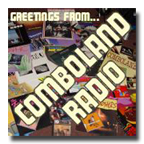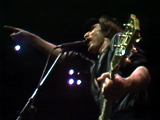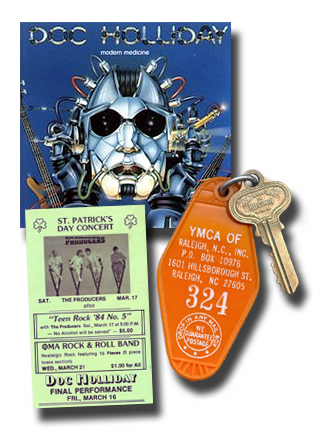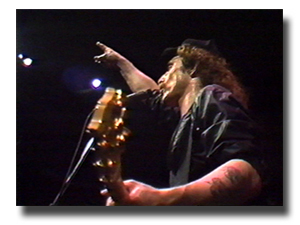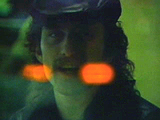Originally from Macon, Georgia, Doc Holliday quickly gained fans and record sales with their 1981 debut album, Doc Holliday. And worldwide acclaim with their second album Doc Holliday Rides Again.
Doc Holliday was a hard rockin' Southern Rock band, touring with bands like Black Sabbath. But, seduced by the dark side of keeping trendy for the Pop charts, German record producer Mack changed DH into a New Wave Techno Southern Rock Pop band. The change brought rejected airplay from MTV, abandonment from their record label and devastation to the band.
Doc Holliday should have been the first wave of the new wave of Southern Rock now coming out of Nashville. Had they kept to their roots, they could have been at the top of the Nashville Class Of '87. Instead they were seduced by the chart success of the early 80's Techno Pop sound. A seduction brought to a number of bands (in other words, it seemed like a good idea at the time).
It's easy to see the mistake now, but it wasn't then. New Wave Techno Pop was the rage and Southern Rock seemed to be old hat. To spice up their sound, Doc Holliday picked up German record producer Mack for their third album. He was known for his hits with Queen and E.L.O. as well as his work with Black Sabbath. So he seemed like the right idea at the right time. Mack stripped the band down to Bruce Brookshire on guitar and vocals and then replaced the rest of the band with synth - or so it sounds. This was a very brave move for the band to "modernize" their sound. Unfortunately the Techno-Southern Rock experiment was a total disaster for DH and for a number of other artists also trying to upgrade their music. ZZ Top's 1983 blockbuster hit album, Eliminator, offered a rare example of a sucessful merge of the two sounds.
I wound up creating two videos for the Doc Holliday album Modern Medicine. A concept video for CITY NIGHTS and a performance video for YOU LIKE TO ROCK. I knew there was something wrong early on when my budget was cut for the videos. I was scheduled to shoot both videos on film, instead they were shot on video and the rest of the budget was put into band road gear. That was the clue. Pull album promotional support and put it into touring.
MTV excitedly promoted the new Doc Holliday video as "coming soon!" When they received it, they totally rejected it. I took this pretty hard. I had never been rejected like that before. I found out later that the entire album had been rejected well before the video arrived.
Now, you may ask, why was a major label act from Georgia coming out of Raleigh? As much as there were a number of area bands failing to get record label attention, there was a small booking / managment agency in the Crabtree area of Raleigh, called CMC who seemed to quietly get the job done. Bill Cain and Jett Matthews ran the office and made some amazing deals. They would helm major label contracts for Nantucket, Doc Holliday and later Glass Moon (as a renamed, Glassmoon). And that, dear reader, is another story.
Eleven months after the production of the Doc Holliday videos, I was to direct my last music video project, a live concert for PKM at The Attic in Greenville, NC. Printed on the announcement for the upcoming shows at The Attic, the week after the PKM concert is a notice of Doc Holliday's last performance.
But like any good story, there is a happy ending. Doc Holliday reunited in 1986, returning back to their roots with the CD Danger Zone, and has since released a number of great albums in Europe. DH is now working on a retrospective documentary.


